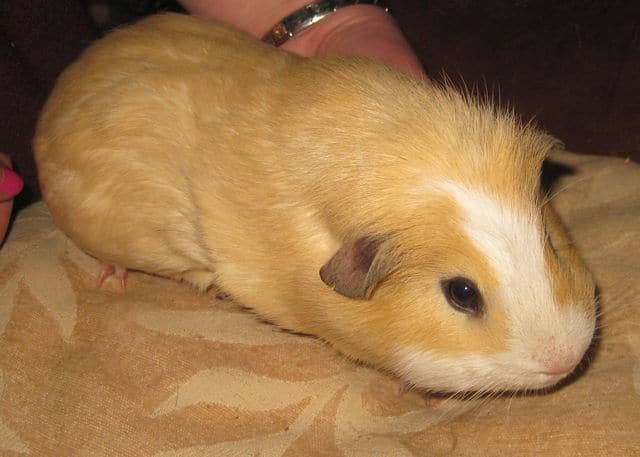Table of Content
Another treatment option is selamectin, which is applied directly to the animal’s fur. Selamectin works by paralyzing the mites, making them unable to feed or reproduce. Mites cause a lot of irritation, and your guinea pig will likely scratch and bite at his or her skin in an attempt to relieve the itching. Mites are tiny parasitic insects that burrow into the skin of their host, causing irritation, inflammation, and sometimes even secondary infections. Some guinea pigs are just prone to skin issues, like dandruff, especially when the weather changes. These piggies may just need simple adjustments like a dietary change or humidifier in the room.

But taking a few precautionary forms of actions can reduce the risk of reinfestation to a minimum. Be advised that the collection of the skin sample is really painful for the guinea pig so only the cold-blooded should remain in the examination room. The intensity of the symptoms is mild and the parasites and their eggs can be easily visualized. The damaged skin is a perfect ground for pathogenic bacteria and yeast to start colonizing. The majority of these problems are caused by small insects, living inside or outside the skin, called with one name – mites.
How To Get Rid Of Mites On Guinea Pigs Naturally?
Unfortunately, guinea pigs don’t understand English, which means we... A pee pad is a type of absorbent paper pad that is used to absorb liquid. While they are very useful with other animals, such as cats and dogs, they are not... Continue to keep areas where infested pigs have frequented clean and refresh hay bedding often. Remember that the eggs and mites will not survive without a host. For hay mites, you might need to scrape the skin to remove eggs.

Depending on the severity of the sarcoptic mite infection, the vet may also administer a de-worming injection. Your vet will recommend an anti-mite shampoo or spray. Even if you don’t see any mites, you might be able to spot their eggs.
My Guinea Pig is Still Itchy. Now What?
It is safe to use on young pigs who have reached at least 12 ounces in weight. Remember that any herbal or “natural” remedy cannot be used by itself to completely resolve the problem. You should rely on the medications described below to cure the underlying issues of infestation. Vitamin C is needed for maintaining skin health, especially the healing of wounds, and it boosts the nervous system for fighting off diseases. If you want to go the natural route, one helpful option is to use neem oil, which has traditionally been used as an insect repellent.

Mites can affect a guinea pig of any age or sex, according to VCA Hospitals (Hess & Axelson). Ivermectin can be applied via injection, given orally, or topically used on the skin behind the ear. Get rid of any type of wood, bedding, and paper product. During the period of treatment use shredded paper for bedding and replace it daily. Along with the clinical signs, a definitive diagnosis is achieved with a microscopic examination of skin scrapings.
What are Sarcoptic mange mites?
Press a strip of tape onto your pig's back and then pull it off and look at it under a magnifying glass. You should be able to see some lice or eggs on the tape. Lice are very contagious, so you want to make sure your pig gets treatment right away. Your vet will likely prescribe an oral or injectable medication. It should be administered two to four times total, with two weeks in between treatments. Journal of the American Veterinary Medical Association, 177.
Very young or old guinea pigs and those that are sick or pregnant will show signs of parasites quicker and may suffer more severe infestations. The most common fur mites in guinea pigs are Cheyletiella and Listrophorus. These fur mites cause irritation, dandruff, and itching.
Whichever types of mites the guinea pigs have, you must follow the right treatment method. Your vet will be able to confirm whether or not your guinea pig has mites and will recommend the best course of treatment for the mite-infected guinea pig. Parasites in guinea pigs are common, although unsettling, but usually easy to treat. Always consult with your exotic vet for a proper diagnosis, as more serious conditions can cause similar symptoms. Ivermectin can be given orally, topically, or by injection.

If your affected guinea pig lives with others that don’t have any symptoms, it’s advisable to treat the healthy ones as well. The intense grooming contributes to the forming of hairballs in the mouth of the pet. Because of the hairballs, some guinea pigs will show reluctance to consume food. The complications with fur mites occur in guinea pigs with a weakened immune system. The mites in guinea pigs are only specific to that species and don’t have the ability to exist on/in human skin. That means they cannot be transferred onto humans and reproduce on the new host.
However, some products should NOT be used on guinea pigs. This includes mite collars, organophosphates, and some permethrin-based products. This is a common problem for guinea owners, as there are very few medicines actually licensed for use on guinea pigs. Unfortunately there is no official mite medicine for guinea pigs. Although Ivermectin for guinea pigs is a popular choice with vets. Your vet will first examine the pig for signs of mites and other external parasites.
If your guinea pig is scratching their ears frequently, this may be a sign that they have ear mites. Your guinea pig may acquire these fur mites from other infested guinea pigs that she comes in contact with or from previously contaminated bedding. The latter ones come in the form of topical solutions. The signs of lice infestation are somewhat similar to fur-mites infestations. Patchy hair loss, moderate scratching, and reddened skin in the neck and the ears.

No comments:
Post a Comment